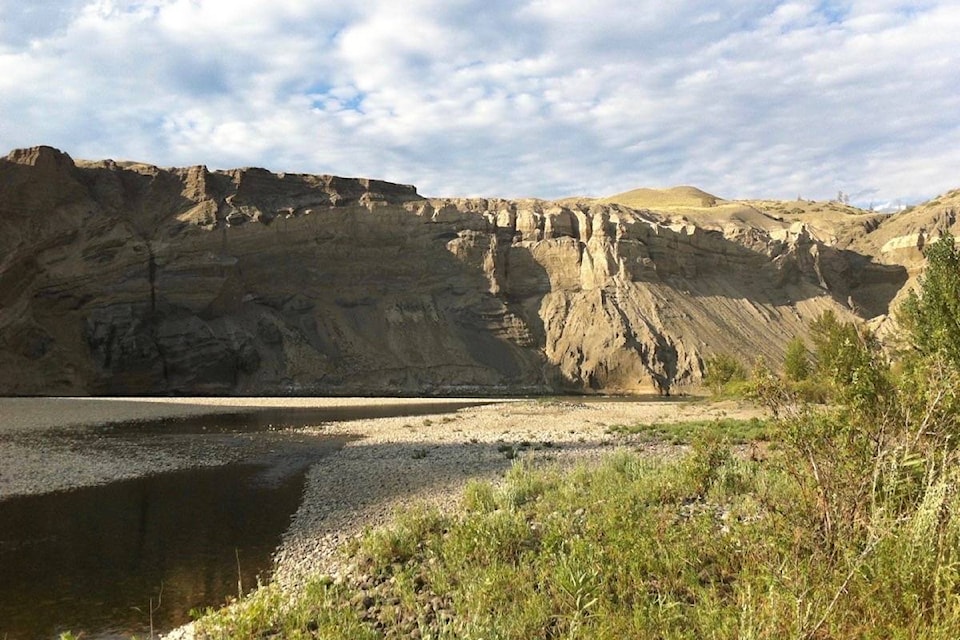The new Ashcroft Slough Society is hoping for a helping hand from the Village of Ashcroft in its pitch to regain access to the slough.
Society spokesman Daniel Collett appeared as a delegation before Ashcroft council on Oct. 26, asking for a $500 grant-in-aid and a letter of support in principle “indicating council is in favour of our purpose to obtain safe, legal pedestrian access to the Ashcroft Slough.”
He also asked council to act as the umbrella agency for the society — until it becomes a non-profit society in a year — to handle any grants it is able to secure for its advocacy work. One of the grants would be used to do a feasibility study, and determine the number of annual slough users, which range from fishing, gold-panning and family recreation activities to swimming in the summer and cross-country skiing and snowshoeing in the winter.
“It’s a very long list. If you go on the Ashcroft Slough Society website [ashcroftsloughsociety.com], you can see all the user groups that have come forward,” Collett said.
The Ashcroft Slough Society was incorporated on Sept. 1 with an aim to secure public access to the slough. In 2013, Collett said the previous mayor had assured them that it was the intention of the property owner to maintain public access to what Collett calls a “national monument.”
However, to get to the slough now, the public has to cross the Ashcroft Terminal industrial land at Evans Road, which was gated off in April to limit access to the private property for safety reasons.
Terminal officials argue the gate is an added safety measure as it pursues a $28.2-million infrastructure expansion, which has put much of its land under construction. But the gate means Collett and others now have to climb under a bridge beneath the railway tracks and over the river below the high water mark to get to the slough, an arduous and dangerous trek for a lot of people.
Collett said while he supports the Ashcroft Terminal’s inland port, he is convinced “economic development can coexist with community wellbeing.”
“People today, especially our youth, recognize the need for work-play balance in their life,” he said, noting recruiting and retaining workers requires quality jobs as well as the opportunity for wellbeing — and green wild spaces — to keep them in, and part of, the community.
“Nature therapy has exceptional benefits for health and wellness,” he said, noting the slough has a history of shared spaces as well as roles in protection, conservation, and heritage values and maintaining options for recreation opportunities.
As part of his delegation, Collett proposed a compromise, suggesting there be pedestrian-only access to address ecological and heritage conservation; tunnel access to avoid rail conflicts and maintain efficient rail operations; signage to limit liability; a trail to skirt the high the water mark and avoid private property concerns; and stewardship of the trail to mitigate risks associated with debris and plant growth.
Patty Kinvig, assistant terminal manager of Ashcroft Terminal, spoke after Collett, noting that CN has officially sent a letter saying it will “not entertain any crossing requests over, under anything at our location, whether at our private property or adjacent to our property.”
She also added when Ashcroft Terminal put up a gate to limit access to private property, “all we did was remove access to an illegal crossing.”
Council did not make any decisions on the request, saying it would come back to the next meeting.
editorial@accjournal.ca
Like us on Facebook and follow us on Twitter
